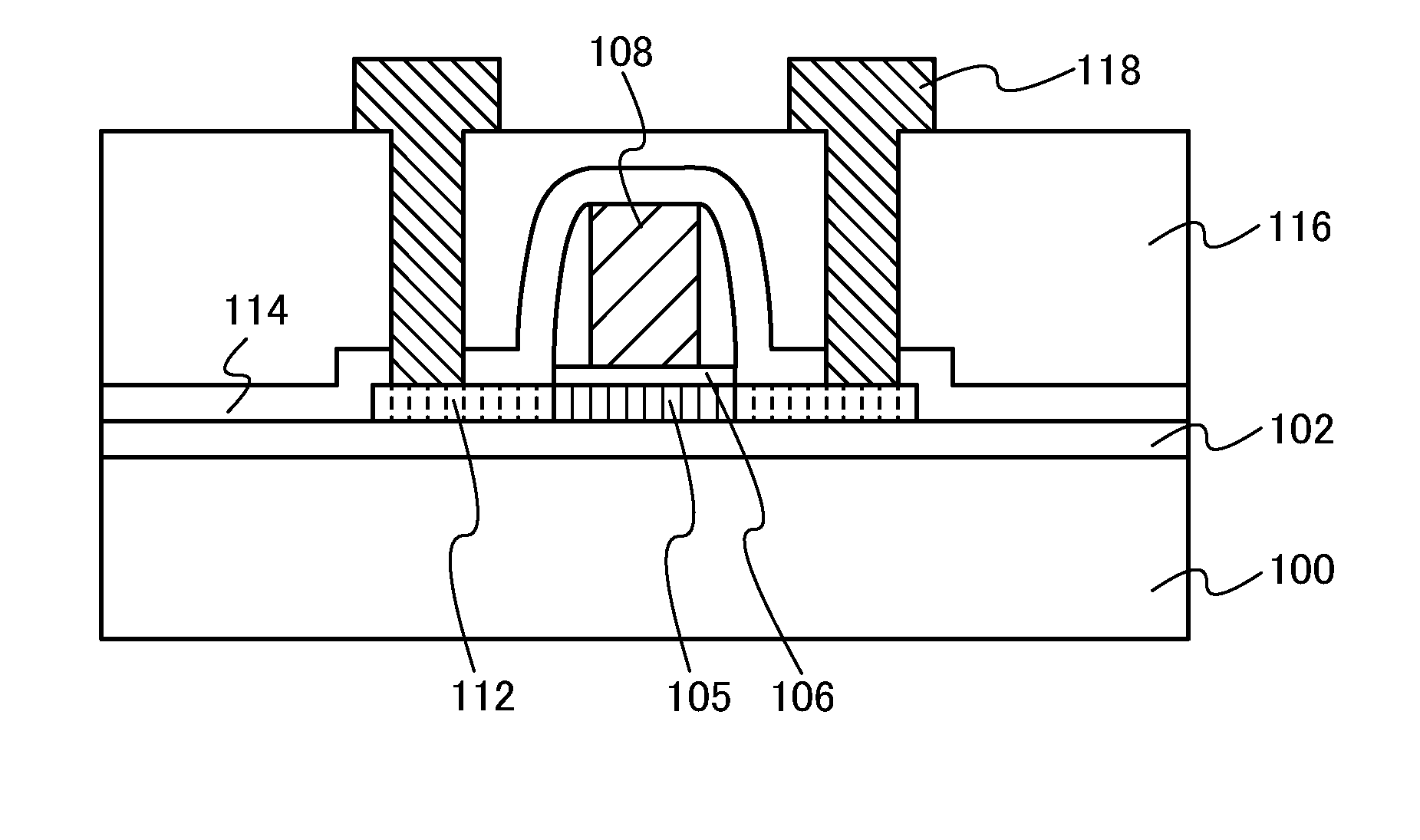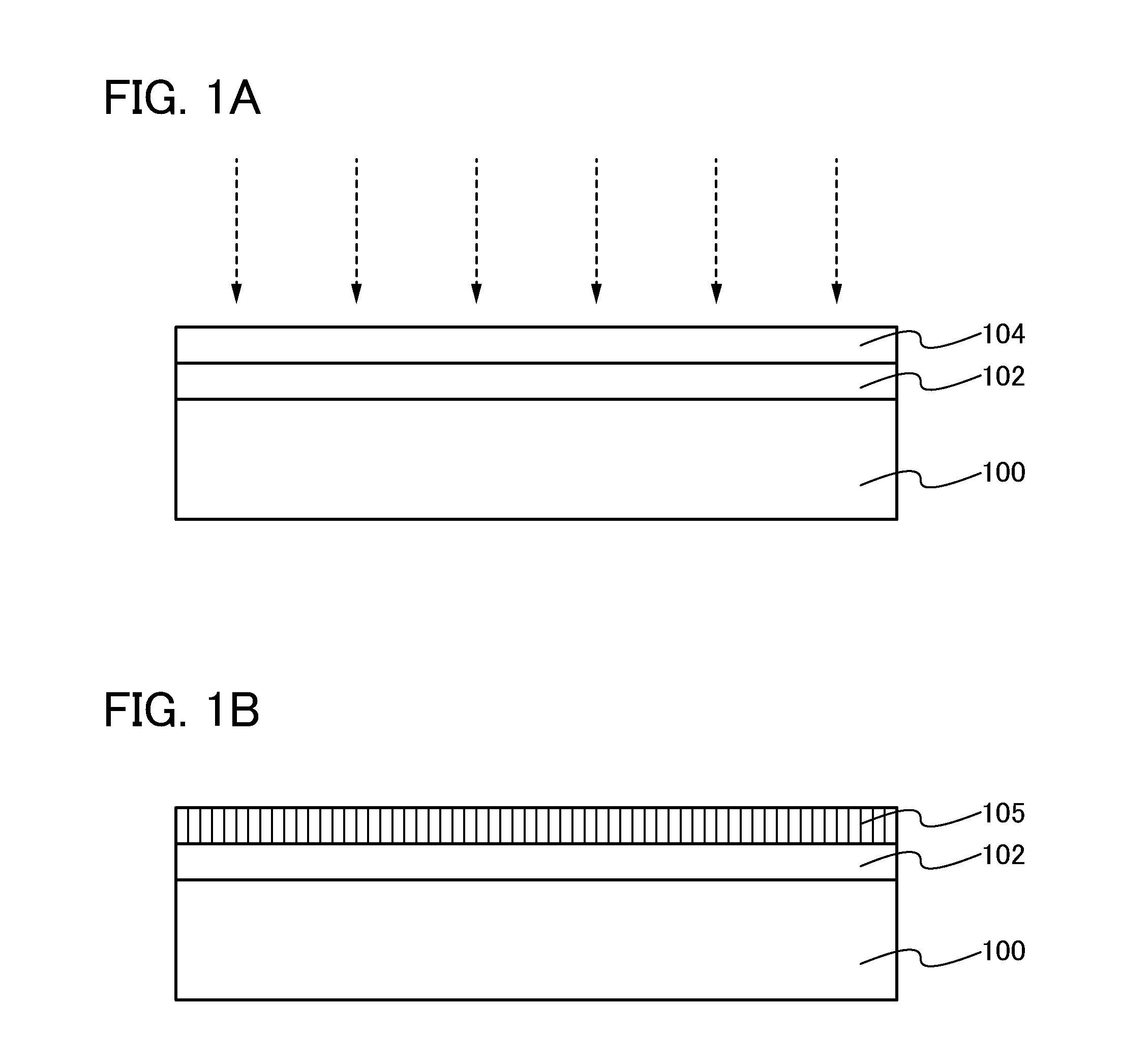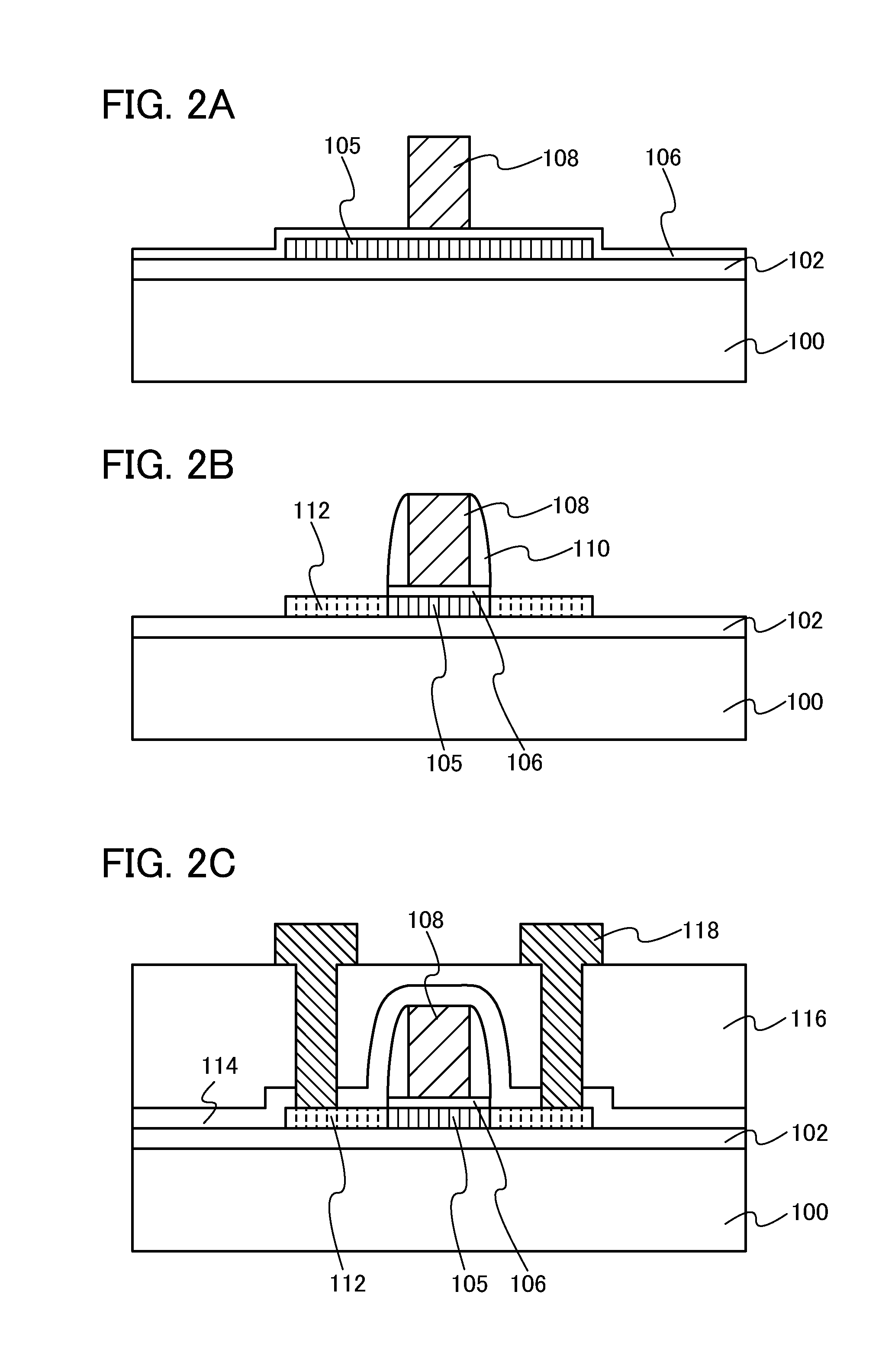Method for manufacturing oxide semiconductor film, method for manufacturing semiconductor device, and semiconductor device
a manufacturing method and semiconductor technology, applied in the direction of semiconductor devices, basic electric elements, electrical apparatus, etc., can solve the problems of incomplete depletion of channel regions, amorphous regions remain, and regions near the interface with the base cannot be crystallized, so as to improve the properties and reliability of elements, improve the mobility of carriers
- Summary
- Abstract
- Description
- Claims
- Application Information
AI Technical Summary
Benefits of technology
Problems solved by technology
Method used
Image
Examples
example 1
[0097]In this example, an oxide semiconductor film according to one embodiment of the present invention is formed and observed using a transmission electron microscope (TEM), and the results thereof will be described.
[0098]In this example, a sample A was manufactured: a silicon oxide film (with a thickness of 300 nm) was deposited over a glass substrate (AN100 manufactured by Asahi Glass Co., Ltd.), an aluminum oxide film (with a thickness of 20 nm) was deposited over the silicon oxide film, and an IGZO film (with a thickness of 30 nm) was deposited as an oxide semiconductor film over the aluminum oxide film. As a comparative example, a sample B was manufactured: a silicon oxide film (with a thickness of 300 nm) was deposited over a glass substrate (AN100 manufactured by Asahi Glass Co., Ltd.), and an IGZO film (with a thickness of 30 nm) was deposited as an oxide semiconductor film over the silicon oxide film.
[0099]That is to say, in the sample A, the aluminum oxide film serves as ...
example 2
[0114]In this example, an oxide semiconductor film according to one embodiment of the present invention is formed, the oxide semiconductor film is observed using a TEM and analyzed by electron diffraction measurement, and the results will thereof be described.
[0115]In this example, a sample C was manufactured: a silicon oxide film (with a thickness of 300 nm) was deposited over a glass substrate (AN100 manufactured by Asahi Glass Co., Ltd.), an yttria-stabilized zirconia (YSZ) film (with a thickness of 10 nm) was deposited over the silicon oxide film, and an IGZO film (with a thickness of 20 nm) was deposited as an oxide semiconductor film over the YSZ film.
[0116]That is to say, in the sample C, the YSZ film serves as a base insulating film of the IGZO film.
[0117]Manufacturing process of the sample C will be described below.
[0118]First, a silicon oxide film was formed over a glass substrate so as to have a thickness of 300 nm. The silicon oxide film was deposited by sputtering under...
PUM
| Property | Measurement | Unit |
|---|---|---|
| melting point | aaaaa | aaaaa |
| melting point | aaaaa | aaaaa |
| melting point | aaaaa | aaaaa |
Abstract
Description
Claims
Application Information
 Login to View More
Login to View More - R&D
- Intellectual Property
- Life Sciences
- Materials
- Tech Scout
- Unparalleled Data Quality
- Higher Quality Content
- 60% Fewer Hallucinations
Browse by: Latest US Patents, China's latest patents, Technical Efficacy Thesaurus, Application Domain, Technology Topic, Popular Technical Reports.
© 2025 PatSnap. All rights reserved.Legal|Privacy policy|Modern Slavery Act Transparency Statement|Sitemap|About US| Contact US: help@patsnap.com



